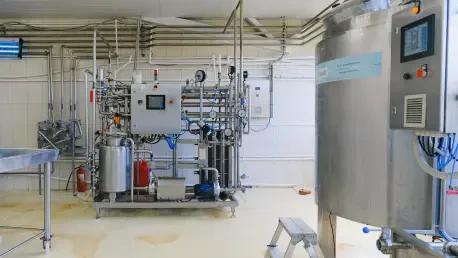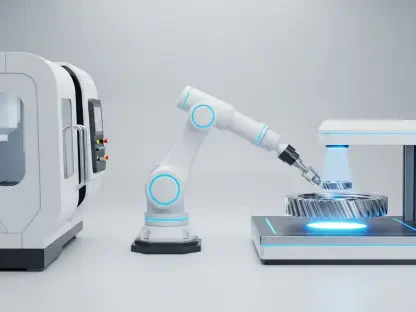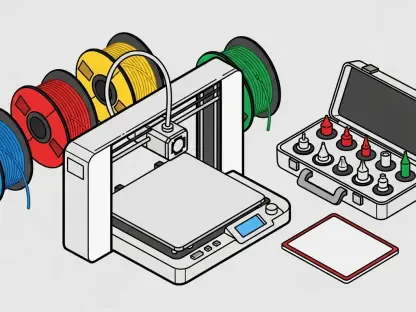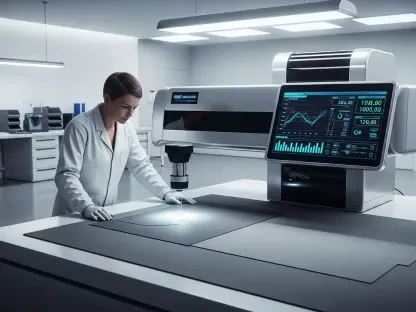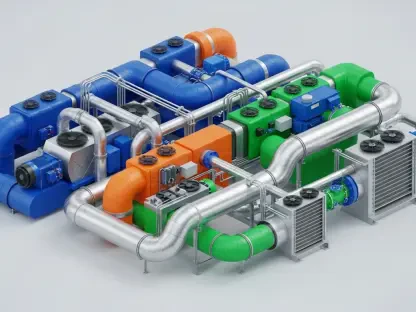In the fast-evolving world of industrial manufacturing, companies are grappling with the challenge of maintaining competitiveness while managing tight budgets, often hindered by outdated control systems that struggle to keep pace with modern demands. Legacy systems, though once the backbone of production lines, can now lead to inefficiencies, frequent downtime, and escalating maintenance costs that drain resources. The question of whether upgrading these aging systems can deliver significant cost savings is becoming increasingly urgent as manufacturers seek ways to balance innovation with financial pragmatism. At a major industry event in Detroit, insights from control system integration experts shed light on this critical issue, offering a fresh perspective on revitalizing existing infrastructure. With the right strategies, it appears that modernizing legacy systems could be a game-changer, potentially slashing operational expenses while boosting productivity. This discussion delves into the practical approaches and real-world benefits of such upgrades, exploring why this path might be the key to sustainable growth in manufacturing.
The Case for Modernization Over Replacement
Amid the complexities of industrial operations, the decision to upgrade legacy control systems rather than replace them entirely emerges as a compelling strategy for cost-conscious manufacturers. Complete system overhauls often come with prohibitive price tags, not to mention the extensive downtime required for installation, which can disrupt production schedules and impact revenue. Upgrading, on the other hand, focuses on enhancing specific components of existing systems, allowing companies to integrate modern technologies without the burden of starting from scratch. This approach minimizes financial strain while addressing critical inefficiencies, such as outdated software or hardware limitations. Experts argue that periodic updates can extend the lifespan of production equipment, ensuring reliability in high-demand environments. By prioritizing targeted improvements, manufacturers can avoid the pitfalls of obsolescence while maintaining a steady operational flow, positioning themselves to adapt to future advancements without breaking the bank.
Beyond the immediate financial benefits, modernizing legacy systems offers a pathway to improved performance metrics that directly influence the bottom line. Tools like virtual commissioning software, which simulate upgrades before implementation, help reduce risks and limit downtime during the transition process. This technology enables manufacturers to test and refine changes in a controlled environment, ensuring seamless integration with minimal disruption. Additionally, upgrades often facilitate the adoption of data analytics for predictive maintenance, allowing companies to anticipate equipment failures before they occur and avoid costly repairs. Enhanced automation capabilities can also address labor shortages by streamlining repetitive tasks, thus improving overall equipment effectiveness. These advancements collectively contribute to a more resilient production line, where efficiency gains translate into measurable cost reductions. The focus on modernization reflects a pragmatic balance between leveraging existing assets and embracing cutting-edge solutions for long-term savings.
Strategies for Effective System Upgrades
Implementing upgrades to legacy systems requires a strategic approach to ensure both cost-effectiveness and operational continuity, a topic of keen interest at industry seminars hosted by leading integration firms. One key method involves a thorough assessment of current infrastructure to identify components most in need of enhancement, rather than applying a one-size-fits-all solution. This targeted process helps allocate resources efficiently, focusing on areas like outdated controllers or inefficient software that hinder performance. Collaboration with specialized partners who understand the nuances of industrial automation can further streamline the upgrade process, offering tailored solutions that align with specific production goals. By prioritizing minimal disruption, such strategies allow manufacturers to maintain output levels during transitions, avoiding the costly halts associated with full replacements. This careful planning underscores the potential for upgrades to deliver savings without sacrificing reliability.
Another crucial aspect of successful upgrades lies in leveraging advanced tools and technologies to optimize the integration of new systems with existing setups. Virtual commissioning stands out as a powerful ally, enabling manufacturers to simulate and troubleshoot upgrades before they go live, thus curtailing unexpected issues that could inflate costs. Furthermore, incorporating data-driven approaches such as real-time monitoring and analytics can enhance system performance post-upgrade, providing insights that drive continuous improvement. These innovations not only reduce maintenance expenses by predicting potential failures but also boost productivity through smarter resource allocation. Training staff to adapt to updated systems is equally vital, ensuring that human operators can maximize the benefits of technological advancements. Together, these strategies create a robust framework for modernization, demonstrating that thoughtful upgrades can yield substantial cost savings while fortifying manufacturing operations against future challenges.
Industry Insights and Future-Ready Solutions
Drawing from discussions at prominent manufacturing gatherings, there is a growing consensus that upgrading legacy systems is not merely a temporary fix but a strategic imperative for staying competitive. Events like those held in Detroit bring together industry leaders to share actionable insights, revealing a trend toward balancing innovation with practicality. Experts emphasize that modernized systems can integrate seamlessly with emerging paradigms like Industry 4.0, enabling manufacturers to harness automation and digitalization without discarding valuable infrastructure. This approach addresses immediate operational hurdles, such as labor shortages and rising energy costs, while laying the groundwork for scalability. The focus on upgrades highlights a nuanced understanding of financial constraints, positioning them as a middle ground between maintaining outdated setups and investing in entirely new systems, ultimately fostering resilience in a dynamic market.
Looking deeper into industry trends, the push for modernization aligns with broader goals of sustainability and efficiency, offering manufacturers a way to reduce waste and optimize resource use. Upgraded systems often support energy-efficient practices, cutting utility expenses that can significantly impact profit margins. Moreover, the ability to incorporate advanced technologies like AI-driven analytics into existing frameworks allows for smarter decision-making, enhancing productivity across the board. Seminars and exhibits at major events showcase how companies can achieve measurable improvements by revitalizing their control systems, with case studies illustrating tangible cost reductions. This collective knowledge underscores the value of periodic updates as a means to future-proof operations, ensuring that manufacturers remain agile in the face of technological shifts. The dialogue around upgrades continues to evolve, pointing to a future where cost savings and innovation go hand in hand.
Paving the Way for Sustainable Savings
Reflecting on the insights shared by industry experts during significant gatherings, it became evident that modernizing legacy control systems has proven to be a pivotal step for many manufacturers seeking to curb expenses. The emphasis on strategic upgrades, supported by innovative tools like virtual commissioning, has delivered notable reductions in downtime and maintenance costs for those who adopted this path. Looking ahead, the challenge lies in scaling these solutions across diverse production environments, ensuring that even smaller firms can access the benefits of modernization. Manufacturers are encouraged to partner with experienced integration specialists to tailor upgrades to their unique needs, while also investing in staff training to sustain long-term efficiency. As the industrial landscape continues to shift, exploring funding options or incentives for technology adoption could further ease the financial burden of upgrades. These actionable steps promise to solidify the role of system modernization as a cornerstone of cost-effective, sustainable manufacturing for years to come.
